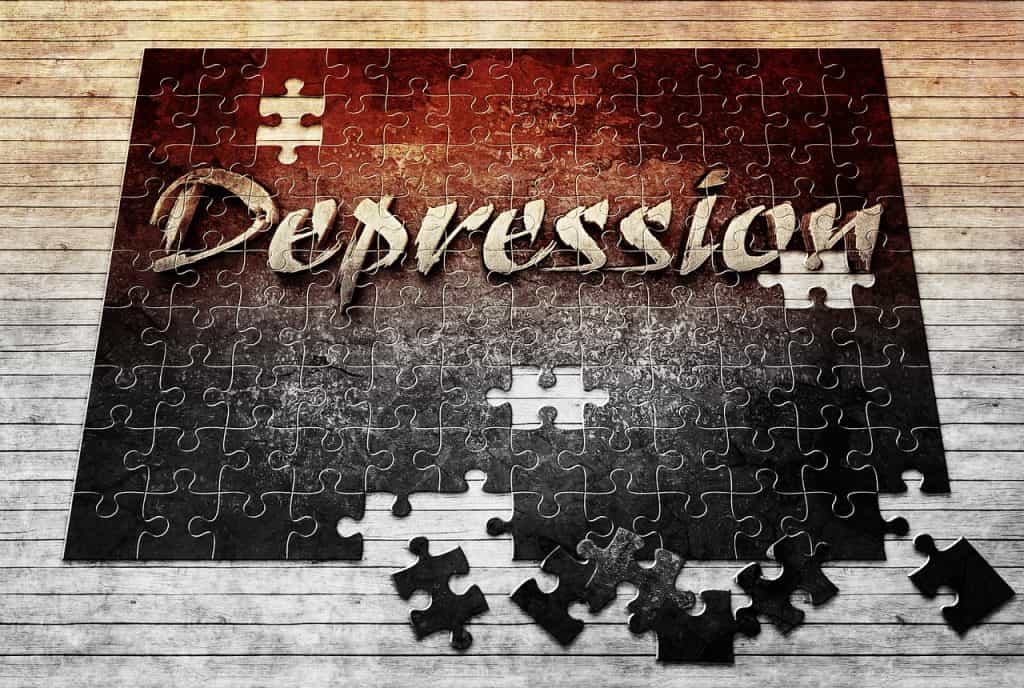Amino acid: A key in improving depression treatment.
The role of a receptor called GPR158 in depression was discovered by researchers at the University of Florida over the course of a 15-year investigation.
In a study, mice who had their GPR158 expression suppressed were less likely to experience stress-related sadness. The structure of GPR158 was discovered by the researchers, and this allowed them to connect it to the amino acid glycine.

Many drugs exist to treat depression, which affects millions of people, but it can be challenging to select the proper one.
Scientists at the Herbert Wertheim UF Scripps Center for Biomedical Innovation and Technology uncovered a finding that revealed how an amino acid is related to depression while studying neurotransmitters.
The revelation was the result of more than ten years of investigation into the functioning of brain cell signalling. Although though discovering a connection to depression was not the original aim of the study, the researchers are enthusiastic about their findings since they potentially influence how depression will be treated in the future.
Depression
In the United States, depression affects over 21 million adults each year, according to the National Institute of Mental Health (NIMH). The COVID-19 pandemic saw a sharp increase in depression rates, which have since persisted and are now a serious issue. Rates among children under 18 are also rising.
While some people suffer situational depression as a result of external factors (such losing a loved one), other people struggle with depression for extended periods of time and it can progress into Major Depressive Disorder.
The NIMH includes the following indications and symptoms of depression among others:
- recurring sense of sadness
- feeling a sense of emptiness
- experiencing a decline in energy or weariness
- having difficulties sleeping
- feeling suicidal thoughts
Individuals who have persistent depressive symptoms may require medical attention. To treat the symptoms of depression, doctors may give drugs, offer treatment, or advise lifestyle modifications.
Tricyclic antidepressants (like imipramine or amitriptyline), selective serotonin reuptake inhibitors (like sertraline or escitalopram), and serotonin-norepinephrine reuptake inhibitors are a few examples of depression drugs (such as duloxetine or venlafaxine).
Those on antidepressants should consult with their healthcare providers frequently and inform them of any suicidal thoughts because these medications can have negative effects, including thoughts of suicide.
Brain cell receptors and depression
The goal of the writers was not to find a connection to depression at first. 15 years ago, they set out to study how brain cell receptors function, and they have achieved that goal.
Prof. Kirill Martemyanov, one of the study’s authors, stated: “Fifteen years ago we discovered a binding partner for proteins we were interested in, which led us to this new receptor.” “We’ve been unravelling this for a while now.”
Professor Martemyanov teaches at the University of Florida Health’s Department of Neurology.
The next several years saw the discovery of the GPR158 receptor by the researchers. In experiments with mice, they discovered that a mouse would be more resistant to stress-induced depression if that receptor was suppressed in the body.
Amino acid treating depression
A 2017 assessment of the literature concluded that glycine is “one of the most significant and straightforward non-essential amino acids in humans, animals, and many mammals.”
The scientists were shocked to learn that GPR158 was an inhibitor when they realised that glycine was the signal’s sender and that it binds to glycine; they changed its name to mGlyR as a result (metabotropic glycine receptor).
The identification of mGlyR should pave the way for fresh investigation into the management of depression, which Prof. Martemyanov intends to do.
Expert responses
Medical News Today spoke with Dr. Simon Faynboym, a physician who has experience working with the American Psychiatric Association.
Dr. Faynboym stated that the findings “essentially shows that glycine can interact with the GPR158 system.” The researchers demonstrate a biochemical mechanism, but the most significant lesson is that this process may represent the link between glycine and taurine’s potential antidepressant qualities.
Currently serving as a delegate to the California Medical Association is Dr. Faynboym. Dr. Faynboym acknowledged the significance of the study but also emphasized that depression is “very complex” and that other neurotransmitters are involved.
Dr. Faynboym remarked that there are numerous factors at play while dealing with depression. “Depression involves several neuronal networks, various neurotransmitters leaving and entering neurons at various rates, and impacts all areas of the brain. Because of the dynamics of the brain, one of the most complicated medical specialisations is mental health.
Dr. Faynboym emphasised the significance of this kind of research in light of this. Since they provide another glimpse behind the curtain of the big unknown that is the brain, research pieces like this one advance the science of psychiatry.
A psychiatrist from Palm Beach Gardens, Florida named Dr. Jessica Turner also discussed the study’s findings.
The medial prefrontal cortex is a well-known brain region associated with depression, and this work suggests targeting a specific receptor there, according to Dr. Turner. “We anticipate providing better, more efficient alleviation for people who are depressed in the future with more focused treatments.”
REFERENCES:
- https://www.medicalnewstoday.com/articles/depression-amino-acid-glycine-key-to-improving-treatment
- https://news.ufl.edu/2023/03/glycine-depression/
- https://www.ncbi.nlm.nih.gov/pmc/articles/PMC7315550/
For more details, kindly visit below.